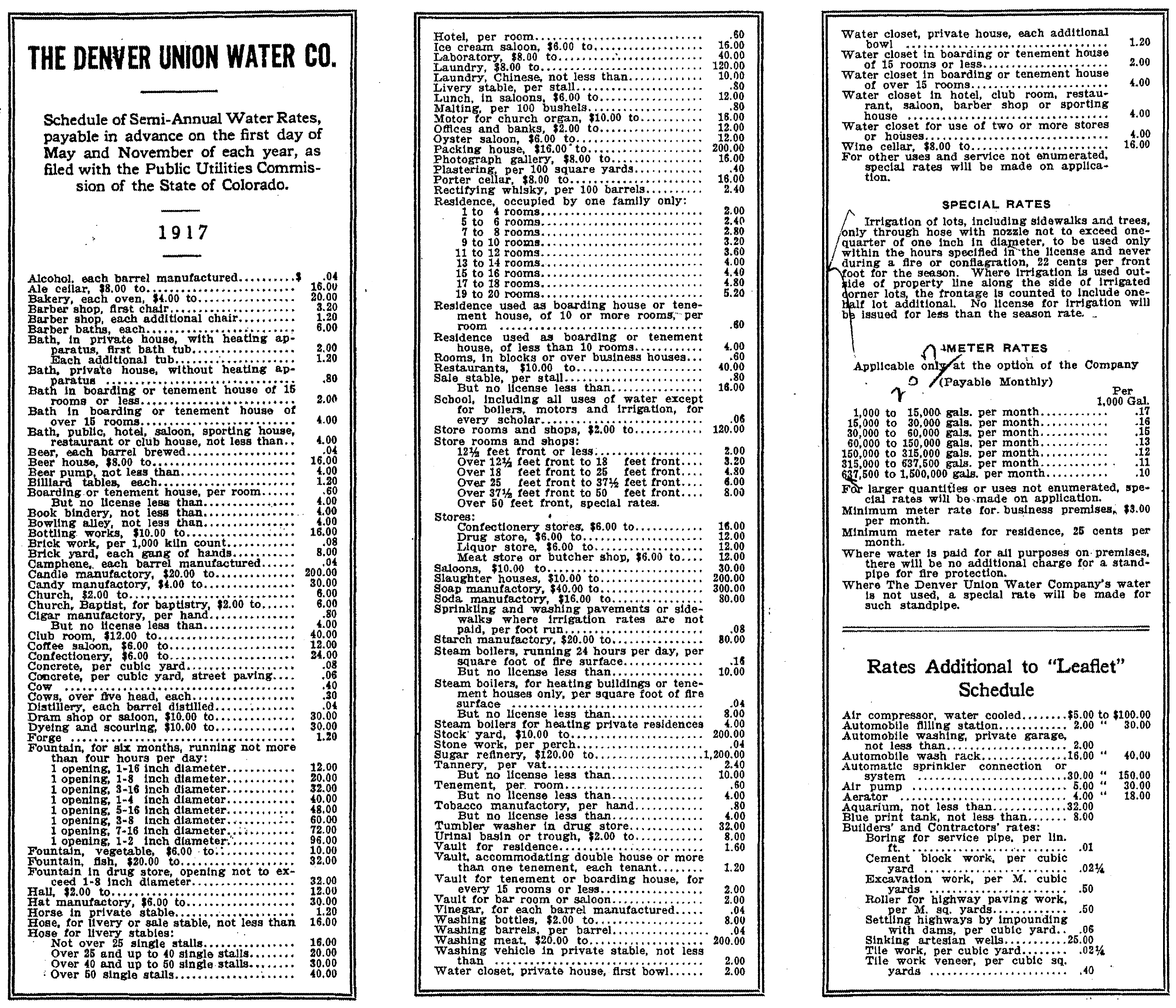
Nickels and dimes: Water rates a century ago
As we continue to research the past as part of Denver Water’s 100th anniversary celebration, the cliché, “They just don't make ’em like they used to” comes to mind. And that’s actually not a bad thing.
From technology to infrastructure projects and water quality processes, we’re fortunate that providing water is much more advanced today. Even the way we charge for water has changed drastically.
We got our hands on the 1917 Denver Union Water Company's rate card, which lays out how customers were billed for water the year before Denver residents voted to buy the Denver Union Water Company and form the municipal agency now known as Denver Water.
While the idea of customers paying for their usage is similar, the way semi-annual charges were determined is very different from today.
Single-family customers, for example, were charged by the number of rooms in their house. One to four rooms cost $2 per month and that increased up to 19 to 20 rooms, which would cost $5.20 a month.
But, here’s where it gets really interesting.
In this cow town, bovines were considered quite divine, as the Denver Union Water Company charged 40 cents for each of the first five cows at each property. Any cows beyond that cost 30 cents each.
And that was a “mare” drop in the bucket compared to the $1.20 charged for a horse in a stable.
Residents didn't get much relief in their private commodes. The first bowl or bathtub cost private residents $2 and $1.20 for each additional bowl or tub. A tub without heating apparatus was slightly cheaper, costing 80 cents.
Drowning their sorrows wasn’t cheap either. Breweries were charged 4 cents per barrel brewed — in addition to a flat rate ranging from $8 to $16.
There were even charges for some things that seemingly had nothing to do with water. Book binderies paid a minimum of $4 while the water company racked up $1.20 for each billiard table. Milliners (hat manufacturers) would have had a hard time becoming millionaires after paying between $6 to $30 per hat.
Much like billing today, the Denver Union Water Company charged each month for customers with meters. When the rate card didn't have a set fee for an item, DUWC would charge special rates not identified in the brochure.
1,000 to 15,000 gallons $0.17
15,000 to 30,000 gallons $0.16
30,000 to 60,000 gallons $0.15
60,000 to 150,000 gallons $0.13
150,000 to 315,000 gallons $0.12
315,000 to 637,500 gallons $0.11
637,500 to 1,500,000 gallons $0.10
Even a century ago, users were dissuaded from running their sprinklers on the sidewalk. People had to pay 8 cents for sprinkling a foot of pavement or sidewalk.
And, that is one thing that hasn’t changed. Our predecessors obviously valued this precious commodity just like we do today.
Use only what you need, indeed.

